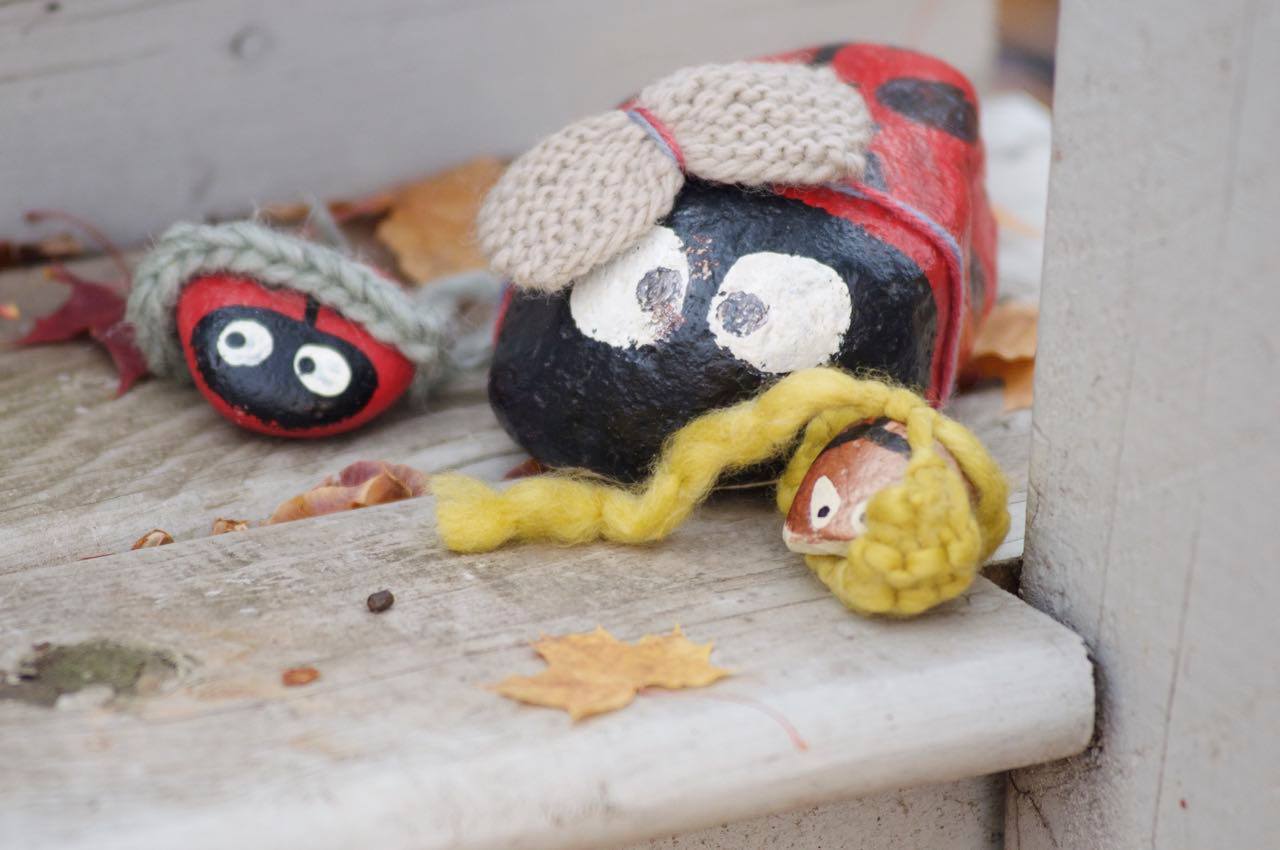What would you do if someone left a rock, painted like a ladybug, on your front step? Would you worry or find it delightful?
Upon returning from a walk along the Grand River one day, I asked my son what he wanted to do with the rocks and pinecones that he’d smuggled home. He was around six years old at the time so he answered honestly.
“I think we should sell them for money,” he said.
After a brief discussion on the value of pinecones, I suggested we think of something else we could do with them. The Ladybug Project was born.
The first step was to paint the smooth palm-sized rocks to mimic his favourite bug. Then we’d hide them around the neighbourhood and challenge our friends to move them to a new location.
The Ladybug Project was an instant success — as the first ones disappeared, we added more and eventually we had hidden over 200 hand-painted lovely little ladies and one special larger rock named Big Bertha, the Brubacher Bug.
On Big Bertha’s belly, I wrote that the kids were leaving her on the front porches of our street and that they would be by in a few days to move her. Imagine what the neighbours thought the first time we left Big Bertha on their front step.
Driving quickly down a street it’s hard to tell what the people that live there bond over.
On my brother’s street, they have a WhatsApp thread dedicated to their friendly but competitive lawn maintenance. The language of immaculate lawn care.
On my friend’s street, everyone commutes by car, but the parents chat every day at the bus stop before their kids get picked up for school. The language of precise timing.
If you walk down my street you’ll pass by benches, and fairy doors, gardens and artwork. The language of leaving kindness for each other.
If leaving kindness is a language, then Big Bertha, the Brubacher ladybug could write the book.
The first time we noticed it was in winter. It was an achingly cold day, as we walked up to the porch where we’d left Big Bertha. I leaned down to pick her up and noticed that she had been wrapped in scrap material with a sign that said: “to keep her warm: it’s too cold outside for a little bug!”
As time went on, one neighbour made Big Bertha a bed to sleep in, one neighbour left her food, another left her candy and yet another neighbour hand-knit Big Bertha tiny accessories.
To my neighbours and I, Big Bertha somehow made sense. But honestly, what would you do if someone left a rock, painted like a ladybug, on the front step of your new home?
A few days after new neighbours moved onto our street, we still hadn’t seen them. So we stealthily left Big Bertha on their front step and scurried away laughing, like always.
As with every new neighbour that moved to our street, I wondered if these new people would be open to learning the language of leaving kindness.
In all of the craziness of moving into a new home, I wasn’t sure if they had even seen our painted bug. As we approached the porch, I stopped in my tracks, smiled and whispered, “she had babies!”
The new neighbours had taken the time to paint three new ladybugs and leave them for Big Bertha to raise as her own.
These new neighbours spoke our language.
Whether you meet your neighbours by borrowing a cup of sugar, chatting in the elevator or building fences, it’s worth it to figure out the language that connects you.
Laura McBride is a resident of downtown Kitchener, photographer and artist.
Published:
Filed under: Columns




Leave a Reply